Oman's FM Visits Iran Amid Speculations of Mediating Role
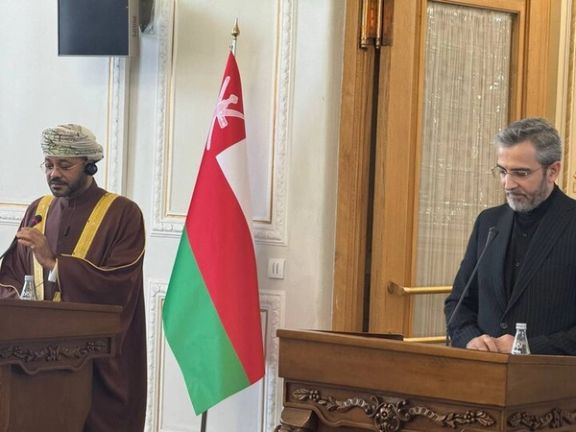
Oman’s foreign minister held talks with his counterpart in Tehran on Monday as Muscat takes a bigger role in regional negotiations.

Oman’s foreign minister held talks with his counterpart in Tehran on Monday as Muscat takes a bigger role in regional negotiations.
The visit of Sayyid Badr bin Hamad al-Busaidi was framed as an expression of sympathy following the helicopter crash that killed Iranian President Ebrahim Raisi and several members of his delegation last week but Muscat has been hosting unofficial US-Iran talks in a bid to calm escalating conflict in the Middle East.
Following the sudden death of the president, the role of countries such as Oman amid the leadership vacuum become ever more valuable for Tehran.
Earlier this month, Axios revealed that Biden administration officials engaged in indirect negotiations with Iranian representatives in Oman to address regional concerns including the Iran-backed Houthis’ Red Sea blockade and Iran’s support for Hamas and Hezbollah amid the war in Gaza.
According to two sources cited by Axios, Brett McGurk, President Joe Biden’s chief Middle East adviser, along with Abram Paley, the acting US envoy for Iran, met with unnamed Iranian envoys to not only talk about regional tensions but also to delve into issues concerning Iran's advancing nuclear program.
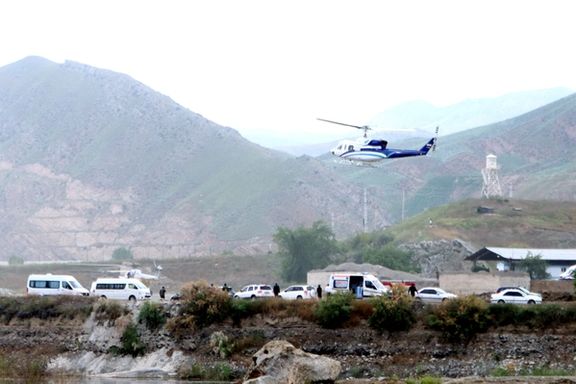
More than a week after the death of Iran's President Ebrahim Raisi, new and conflicting details about the incident continue to surface, leaving the circumstances of the helicopter crash shrouded in uncertainty.
On Friday, the first formal report by the General Staff of the Armed Forces on the helicopter incident was published. Although this report ruled out the possibility of the chopper being shot down, it did not state the main reason for the crash and mentioned that “more time is needed for a definitive conclusion”.
Adding to the perplexity, it has come to light that the President's bodyguard was notably absent from the ill-fated helicopter.
Raisi’s chief of staff’s account vs preliminary official report
An interview with Gholamhossein Esmaeili, Raisi's chief of staff and a member of the president's entourage, has further contributed to the confusion.
In the early hours of May 19th, Iran's President Ebrahim Raisi embarked on a journey, accompanied by his entourage, from Tehran to Tabriz.

Timeline of events on May 19th according to Iran President chief of staff:
6:00 AM (Tehran Time): Iran's president and his entourage flew from Tehran to Tabriz, located in the East Azerbaijan province of northwestern Iran, by plane.
7:15/30 AM: From Tabriz, three helicopters were utilized for a project visit in Agh Band.
9:00 AM: The second leg of the journey proceeded from Agh Band to Khoda Afarin, near the Giz Galasi Dam, with further plans for travel.
1:00 PM: The final leg was supposed to be from Khoda Afarin towards Tabriz, but the helicopter crash prevented the completion of the journey.
1:35 PM: En route to Tabriz, the helicopters attempted to avoid a “cloud Layer” by increasing their altitude. While the first and third helicopters successfully navigated the clouds, the president’s helicopter, flying in the middle, disappeared. It was later discovered to have crashed, resulting in the deaths of all its passengers. Iran President chief of staff stated: "We emerged from the cloud layer very normally, even without any turbulence."

Esmaeili's account highlights two crucial points. The first point is his statement that the "weather was favorable, with no issues”.
Noor News, an agency close to the Supreme National Security Council, also reported that all necessary safety measures had been implemented to ensure the president's helicopter flight was secure.
The short six-item report by the General Staff of the Armed Forces also did not mention weather conditions at the time of the incident and stated on item six of the report that "no suspicious issues were observed in the communications between the control tower and the flight crew." This raises questions about the suddenness of the incident.

Signals from the chopper post-crash
Esmaeili's account also sheds light on his communication with cleric Mohammad Ali Al-Hashem, a passenger aboard the helicopter, post-crash.
Esmaeili explains that he attempted to contact the pilot, but Al-Hashem answered the phone instead. He reveals that he queried Al-Hashem about the incident, to which he responded that “he did not understand what has happened”.
In the interview, he stated that he was in contact with Al-Hashem for three to four hours after the incident. However, the alleged surviving passenger was found dead when rescue teams arrived, although his body was not burned like that of Raisi and others.
While “most likely the transponder system was turned off or that the helicopter did not have one,” as stated by the Turkish transport minister, the questions is if there was a mobile signal for up to three hours after the crash. In that case, why pinpointing the coordinates of the helicopter wreckage took 15 hours?
The mystery of the absent bodyguard
The latest images of Ebrahim Raisi show his bodyguard was almost always at his side. However, the released list of casualties revealed that he was not onboard.
Given that the Bell 212 helicopter can accommodate 15 passengers but only had 8 on board, the question arises: why did Ebrahim Raisi’s personal bodyguard continue the journey in a different helicopter?
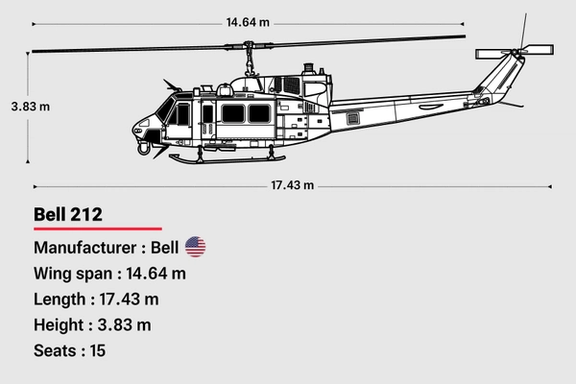
Javad Mehrabi, the bodyguard of Iran's President, continued the journey in one of the other two helicopters accompanying the president.
General Esmaeil Kosari, a former IRGC commander and current member of parliament, dismissed claims about the status of the president's guards, stating, "Some media outlets are fabricating irrelevant statements.
The second guard was in a separate helicopter as there was no necessity for multiple guards in one aircraft."
However, HamMihan Newspaper in Iran reported suggestions that some passengers may have been reassigned to another helicopter at the last minute before the flight. A video report published May 26 by state broadcaster IRIB shows him getting off the President’s chopper during a landing.
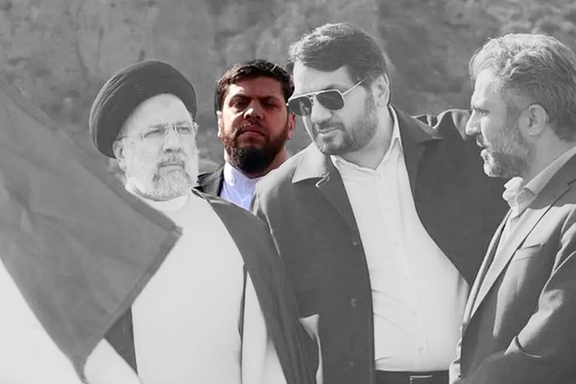
What might have caused the helicopter crash?
Pinpointing the exact cause of the May 19 fatal crash is challenging. Such investigations are long and complex processes. But when it comes to the Iranian government, any such report should be taken with a pinch of salt.
The Armed Forces Staff is the same organization that, after 73 hours of denials, finally admitted that "Ukrainian Airlines flight PS752... was hit [with missiles] due to human error and unintentionally..."
The flight was struck by two missiles from the Revolutionary Guards killing all 176 people on board. Iranian officials attributed the plane crash to technical failure for 73 hours. Canada, Ukraine, Sweden, and Britain are seeking damages for the families of the people on board who were killed and believe that Iran did not conduct a fair, transparent, and impartial investigation and prosecution.
Also, the Ontario Court of Justice ruled in 2023 that the shooting down of Flight PS752 by the Iranian military constitutes "terrorist activity".
Potential causes might include:
1- Weather condition: Some in Iran attribute the crash to adverse weather conditions. A member of the helicopter search and rescue team stated in an exclusive interview with Tasnim News Agency, affiliated with the IRGC, that the "weather factor" can be considered the cause of the crash. However, this contrasts sharply with the account given by the President's chief of staff, who was part of the president's entourage and reported that the "weather was favorable, with no issues."
2- Technical Failure: Catastrophic mechanical failures, like the rear rotor mechanism malfunction that occurred in the King Power Stadium crash, are not unprecedented and could have contributed to the Iran helicopter crash.
3- Human error: Human error remains a constant specter in aviation mishaps. Errors in altitude reading, for example, could have played a role in this incident.
4- Explosive Sabotage: In the General Staff of the Armed Forces of the Islamic Republic of Iran, it is stated that “the pilot established contact with the pilot of another helicopter approximately one and a half minutes before the helicopter crash”. This again reinforces the hypothesis of a sudden and unprecedented incident.
Farzin Nadimi, a Senior Fellow at The Washington Institute, did not rule out the possibility of sabotage in the helicopter crash. He stressed the importance of conducting a thorough investigation and suggested that various types of "small bombs" could have been employed, including remote-controlled or altitude-triggered explosives. Examining the wreckage could yield crucial evidence.
The mysterious death of Yevgeny Prigozhin, who attempted an unsuccessful coup against Russia’s Vladimir Putin and perished in a crash involving his private jet, underscores the impact of such incidents on both leaders and adversaries.

Trading was brought to a halt in stock exchanges in Isfahan and Tabriz on Monday as brokers initiated a strike against the downturn in Iran’s stock market.
The market has been in a decline, enduring a drop of over 5,600 points at the opening of Monday's trading, with 90 percent of the market bathed in red and over 60 percent of stocks queued for sale.
The recent plunge echoes the crash of July 2020, where Tehran’s stock market plummeted by over 30 percent in a single week, obliterating the savings of countless small investors lured by government assurances of a secure market. Allegations persist that government entities had artificially inflated the market, extracting hefty profits before its collapse.
The memory of the crisis lingers among investors, heightening anxiety with every market fluctuation. Critics of the government point to the early 2020 decision by President Hassan Rouhani's government to offload state assets on the Tehran Stock Exchange (TSE) as an act of market manipulation. Initially, the index surged to 2 million points, buoyed by small investors coaxed by the government amidst the rial's devaluation. However, it recoiled to 1.2 million points, erasing the wealth of the investors.
At the time, hardliner critics within the government accused the Rouhani administration of deliberately attracting public investment to alleviate a budget shortfall through sales of stocks, predominantly in public and quasi-public companies.
Controlled largely by the government and its affiliated conglomerates, which command approximately 80 percent of the economy, the Tehran stock market is just one cog in a machine of state-controlled economic entities. With Iran's economic chiefs often appointed by the government itself, the stock market's operational independence is compromised.
As the rial continues to lose value and inflation hovers near 50 percent, many Iranians are scrambling to convert their savings into more stable assets like hard currencies or gold.

Iranian Nobel Peace Prize laureate Narges Mohammadi slammed the United Nations for honoring the late President Ebrahim Raisi.
In a critique shared from Evin Prison, Mohammadi called the memorial "a celebration of the gallows” after 2023 had been record year of executions with scores more killed in the last month alone.
Mohammadi's remarks came in response to the recent memorial held at the UN, which she said "truly commemorates the gallows, executions, and mass killings" rather than the values the UN purports to uphold. However, in spite of mass rights abuses at home leading to sanctions globally, the UN allowed Iran to chair a human rights forum event last year.
Mohammadi criticized global leaders for glorifying a man she described as "a blatant human rights violator and the executioner of Iran's history, who was an instrument of oppression until his death."
The outspoken activist, who has faced repeated imprisonments for her defense of human rights, argued that such commemorations threaten to normalize dictatorial and oppressive regimes worldwide. "When world governments treat such a figure as if they have lost a peace-loving and democratic individual, it sets a dangerous precedent," Mohammadi stated, warning of the potential rise of similar figures in other parts of the world.
Mohammadi's current imprisonment followed her arrest during the nationwide anti-government protests ignited by the death of 22-year-old government's repressive policies.
Shirin Ebadi, an Iranian lawyer and Nobel Peace Prize winner, also asked the United Nations to cancel the memorial ceremony and not to “mock” its subordinate institutions as the event stirred controversy amid Iran’s domestic and international record of rights abuses and military activity.

Amid international sanctions, Iran has touted Oman as a key player in its strategy to bypass global trade restrictions.
Hamidreza Salehi, a member of the joint Iran-Oman Chamber of Commerce board, said that Oman serves as a conduit for re-exporting Iranian goods into global markets, adding a 30 percent value to bypass export restrictions.
“Although these goods are marketed under the Omani brand in global markets, this trade holds substantial profits for Iranian traders,” he added.
Last year, trade between Iran and Oman surged to about $1.2 billion, with $700 million stemming from Iranian exports.
It is part of a broader scheme involving the Revolutionary Guards (IRGC) and its network of oil laundering operations. These networks, which span across countries like the UAE, Turkey and Malaysia, facilitate covert financial transactions and support Tehran's proxy activities.
Despite the sanctions imposed since 2018 and earlier, the Iranian government, under President Ebrahim Raisi, has boasted about its ability to circumvent them, sustaining the nation's economy with a flow of foreign currency from nearly 1.5 million barrels of oil exported daily, primarily to China. The figure marks a significant increase from the mere 200,000 barrels per day exported following the re-imposition of US sanctions in 2019.
Critics within Iran have pointed out that such operations, often controlled by the IRGC, not only undermine the potential for economic reform but also benefit an elite group within the regime, known as "sanctions profiteers."
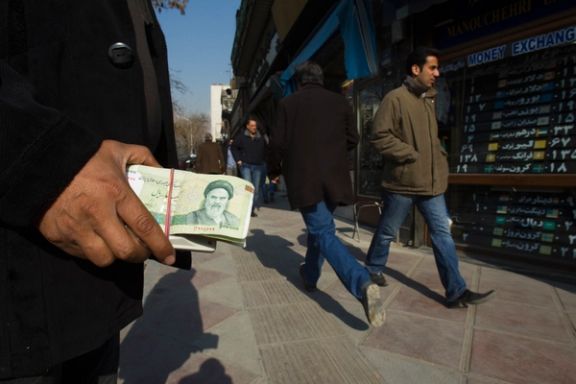
Iran’s battered currency, the rial, has recovered more than half of its losses during May as the likelihood of war with Israel decreased and the US continued negotiations with Tehran.
The sudden death of President Ebrahim Raisi last week in a helicopter crash briefly weakened the national currency, but it recovered surprisingly fast, although it is far from pre-January levels.
The rial, which was trading at around 510,000 per dollar in December 2023, began to fall steadily from early January as tensions rose in the Middle East and Tehran continued to threaten Israel. By mid-March it was trading at around 600,000 to the dollar but fell to 670,000 as Israel attacked Iran’s diplomatic compound in Damascus on April 1.
Two top Revolutionary Guard generals and five other key officers were killed when Israeli missiles flattened a building near the embassy, prompting Iran to vow revenge, and Israel threatening to retaliate.
This raised the likelihood of both an economic and a political crisis for Tehran’s rulers, as the specter of more inflation on top of the current 50-percent annual rate sparked a sense of panic.
Tehran finally delivered on its promise by launching more than 300 drones and missiles against Israel on April 13-14, 99% of which were shot down by Israeli air defenses and allied warplanes.
However, the Israeli response a few days later was very limited and measured, gradually dissipating the fears of a major confrontation.
By late April, the rial began to rise and by mid-May the dollar fell to around 580,000 rials in Tehran’s black market, meaning a strong come back for the rial from the April lows. It has stayed at that level for almost two weeks.
Although the reduction of tensions with Israel is seen by analysts as the main reason for rial’s rebound, government intervention in the markets is always a factor in Tehran.
There are limited sources for the black market to obtain hard currencies, such as US dollars, euros, British pounds or Canadian dollars. The black market’s cash currency flows are mostly from small or individual sources. As a result, when the rial falls sharply and the government decides to intervene, it injects a few tens of millions of US dollars’ worth of hard currencies into the market.
The amount and frequency of these interventions are usually treated as state secrets, but occasionally hints appear in the media.
However, bad news about higher prices for consumers continue to be sporadically reported in Tehran media and on social media. Usually, it takes a few weeks for rial’s fall to impact prices and the annual inflation rate. Local media have reported in the past two weeks have that housing costs and food prices have been rising, with a middle-class family now forced to pay at least $250 a month for rent, which is more than ordinary salaries. Consumption of meat also continues to decline, as one kilogram of meat could cost 5% or more of monthly wages.
The new president, to be elected at the end of June, will face the monumental task of addressing economic challenges that have become increasingly difficult due to ongoing oil-export and banking restrictions. Without exceeding roughly $70 billion in oil exports, the government continually faces significant budget deficits and is forced to print money.